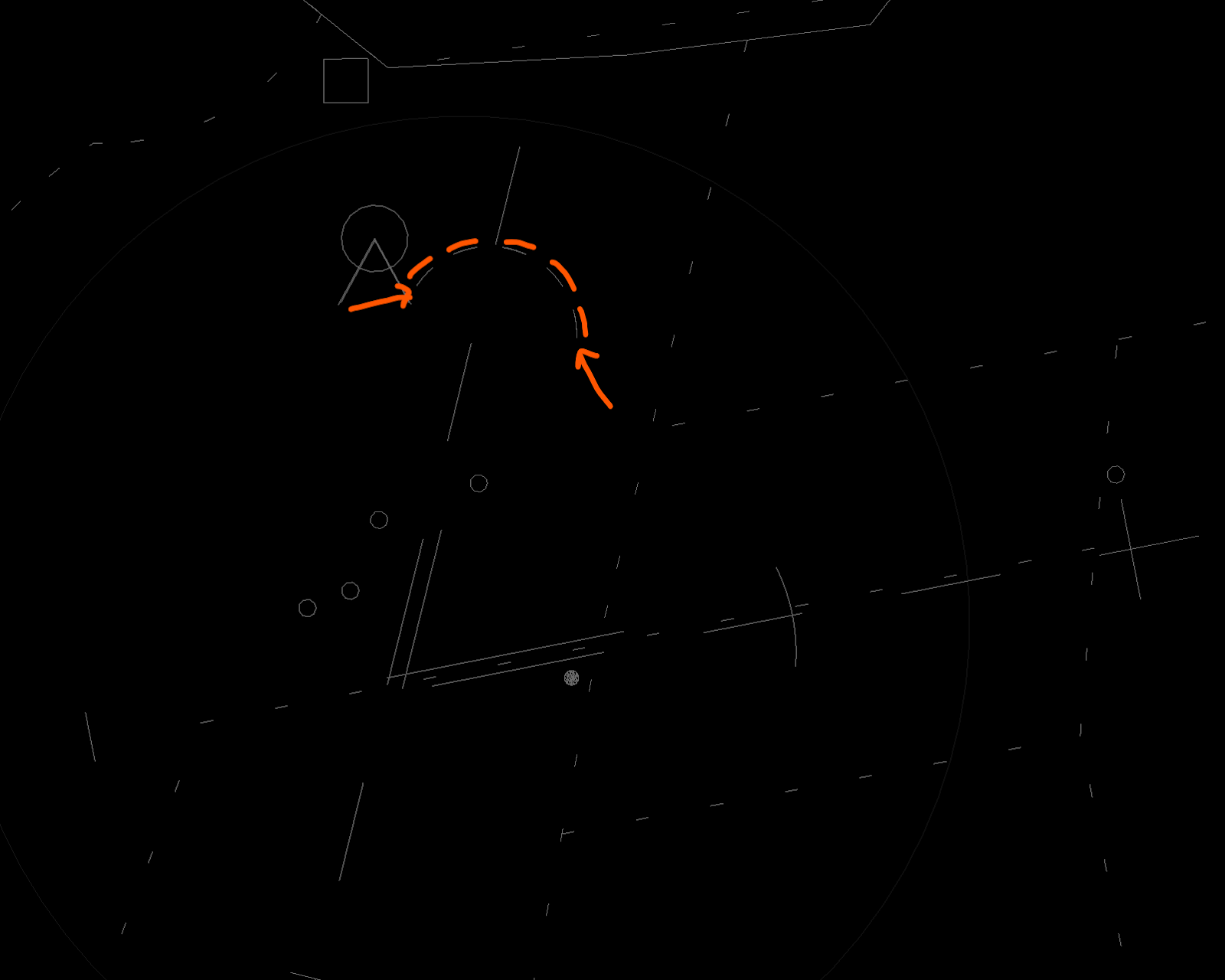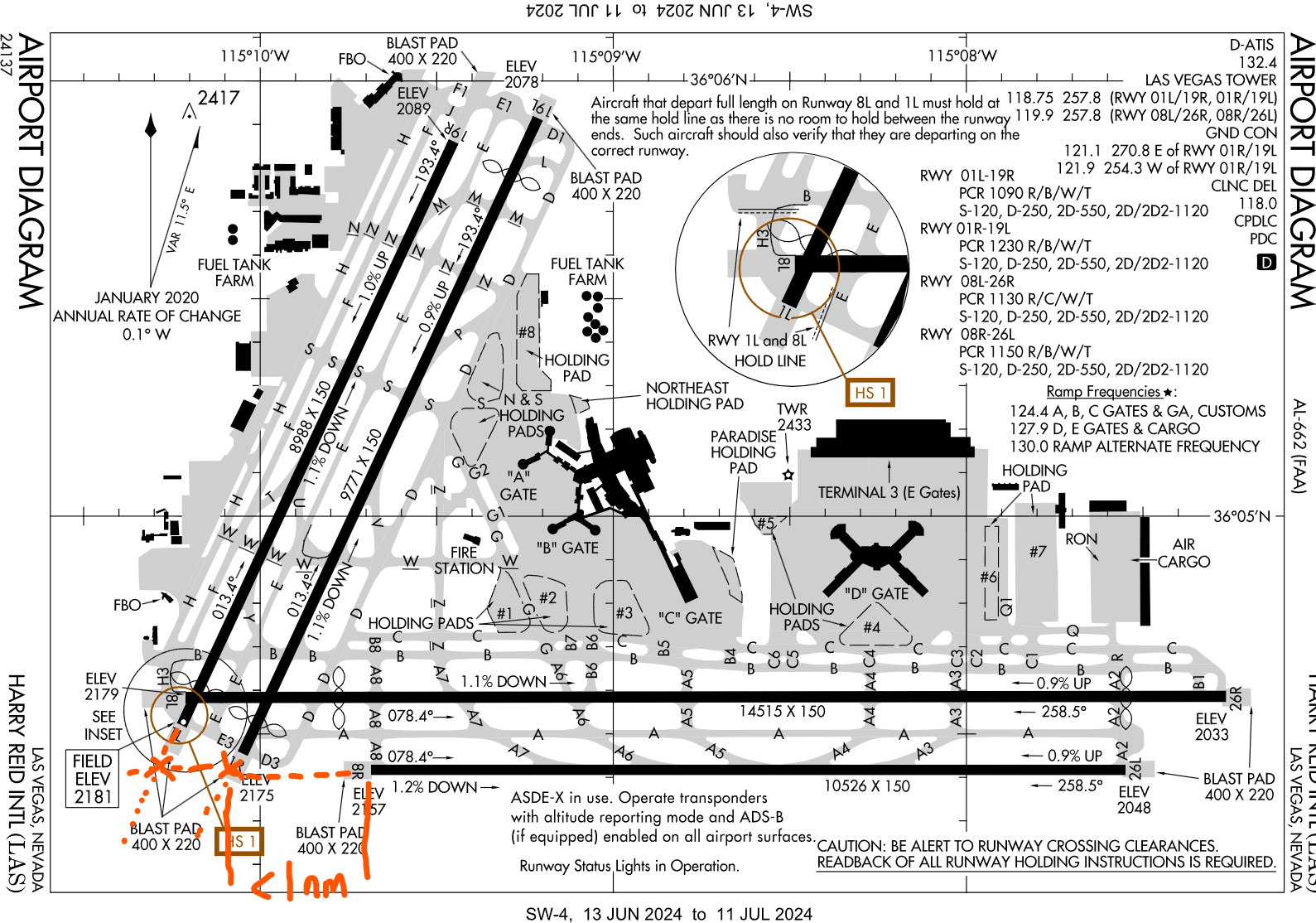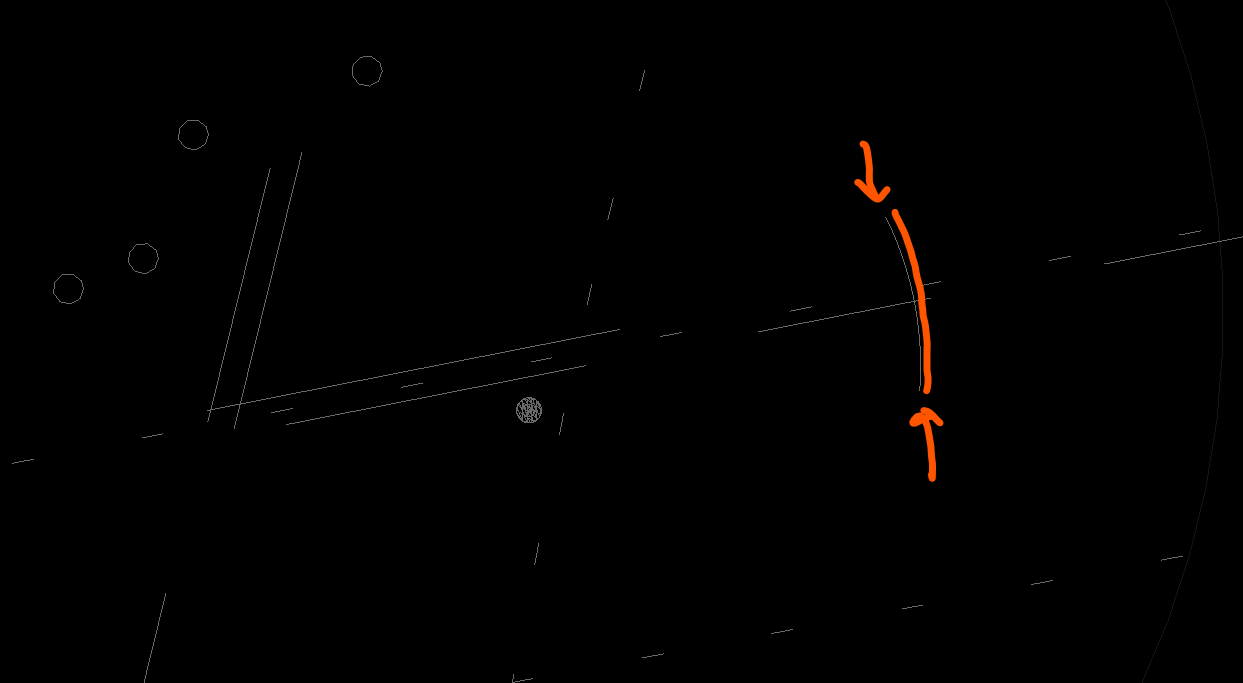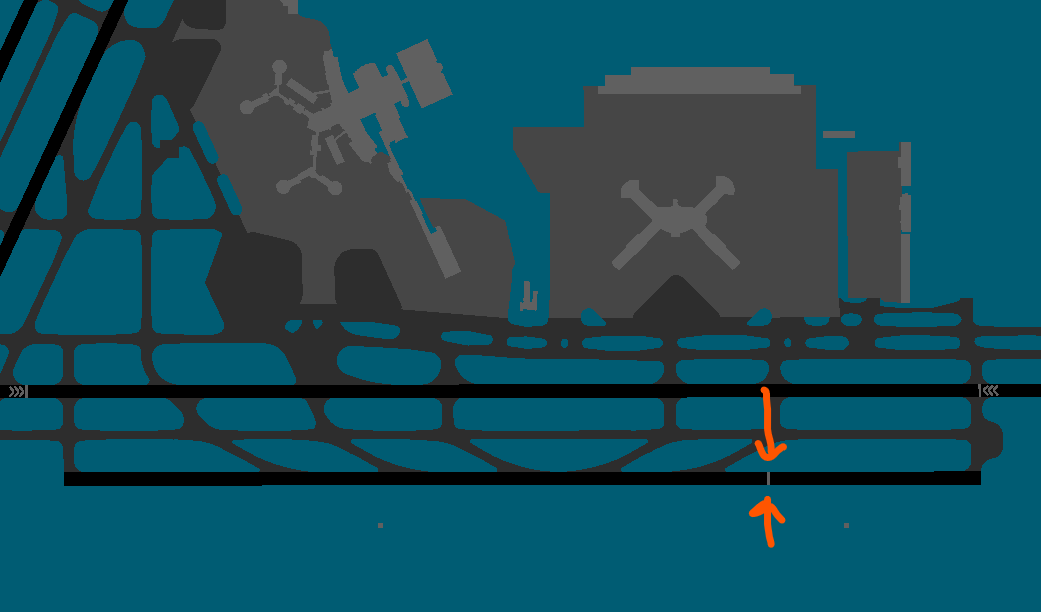

Controller Schedule
December 28th, 2025
Session with ER
1700 - 1830 PST / 0100 - 0230 Zulu
The goal of the following article is to serve as a recap of the intersecting runway requirements that we are required to follow at LAS, and maybe teach you something new about converging runway separation.
This will also serve as a good guide to run Vegas efficiently during event-level traffic. I would encourage everyone to read at some point before they hop onto LAS Tower for the first time.
If you have any questions about this article, please reach out to me via email at [email protected], or ping me on Discord. With that, let’s get started…
Config 1 at LAS presents a unique challenge due to managing the intersecting runways. It is particularly challenging because the intersection point of the runways is at their very end (as opposed to in the middle like LGA or SFO).
For the sake of this article, I am going to try and cover the 99% of scenarios that we will see in Config 1 (i.e., not non-standard operations such as arrivals to 26R). As a reminder, in Config 1 we are:
arriving to 19R/26L
departing from 26R/19R/19L
In this article, we will cover two key facts and their implications:
Fact #1: Runways 19R/19L are considered intersecting runways with 26R
Fact #2: Runways 19R/19L are considered converging runways with 26L
As you can see on this diagram, the 19s and 26R intersect, which means we have to follow certain provisions of the 7110.65 relating to intersecting runways. The runway intersections are circled in red.

The section in question for departure procedures is 3-9-8 INTERSECTING RUNWAY/INTERSECTING FLIGHT PATH OPERATIONS. There are multiple scenarios/requirements in this section (which you should read in its entirety), but in 99% of cases at LAS in Config 1, only two will be applicable. Let me focus on those:
Requirement 1: Ensure that a departure does not begin takeoff roll until a preceding departure aircraft (off the intersecting runway) has passed the intersection.
Example: A departure off 26R cannot begin rolling until a departure from 19L/R has passed the intersection.
Example: A departure off 19L/R cannot begin rolling until a departure from 26R has passed the intersection.
Requirement 2: Ensure that a departure does not begin takeoff roll until a preceding arriving aircraft (to the intersecting runway) is either a) clear of the landing runway, or b) has completed the landing roll and is observed turning at an exit point prior to the intersection.
Example: A departure off 26R cannot begin rolling until an arrival on 19L/R is observed exiting the runway (or is already clear of the runway).
Let’s talk more about requirement 2 where we are trying to separate a departure from a previous arrival. There are some other cases in section 3-9-8 that you may have noticed, but the “clear of runway” scenario is going to be the one most applicable to LAS. Why? Well unfortunately, at LAS, we don’t have the advantage of waiting for an arrival aircraft to “pass” the intersection (like at SFO) in order to give a takeoff clearance – this is because the intersection is at the end of the runway, and 99% of aircraft are going to exit before the end. So, the rule we use for the most part: an arriving aircraft to the 19s must be turning off the runway prior to rolling a 26R departure.
Note, there are also some wake turbulence requirements in section 3-9-8 that I am not going to cover here, but you should read about them. These are time-based requirements (rather than mileage-based), so it is good to brush up on. If you do read into it more, note that at LAS, we would consider all aircraft’s flight paths to be “crossing” in config 1, since they will be airborne by the time they reach the runway intersection. This means the wake turbulence time requirements will always be applicable for departures off the 19s following a departure off the 26s, or vice versa.
The section in question for arrival procedures is 3-10-4 INTERSECTING RUNWAY/INTERSECTING FLIGHT PATH OPERATIONS. We will only cover the most common scenario at LAS for arrival separation: an arrival to the 19s, with a departure off 26R.
Requirement 3: Ensure that an arrival does not cross the landing threshold until a preceding departure aircraft (off the intersecting runway) has passed the intersection.
Example: An arrival to 19L/R cannot cross the threshold (arrival end of runway) until a departure off 26R has crossed the runway intersection with 19L or 19R (as applicable).
You may note that unlike requirements 1 & 2 for handling departure aircraft, requirement 3 is a bit more tricky. After all, your aircraft is in the air. How are you supposed to control when it crosses the landing threshold?
Well, unfortunately, you cannot control this other than telling an aircraft to slow down or do S turns. If the arrival reaches the landing threshold and the departure off 26R has not crossed the runway intersection (or you anticipate this), a go-around should be issued.
Aside from modifying the flight path of your airborne arrival, there is one other factor you have a lot more control over: when we issue takeoff clearances off of runway 26R. Thankfully, there is a nifty visual aid on your video map to help us here.

On the Config 1 tower map for LAS, we see this dotted arc. When an arrival aircraft is inside of this arc, they are likely going to reach the runway threshold before your 26R departure can cross the intersection. This is around a 3 nm final to the 19s.
So, if you have a departure waiting on 26R, and an arrival to the 19s inside of this arc, that’s a good sign that you should be waiting to roll your 26R departure.
Have an arrival just outside of the arc? You better get that 26R departure rolling quickly!
Keep in mind that aircraft performance varies. If you have a slow Citation on final to the 19s you may be able to make it work with them being within the arc, and still have the departure off 26R beat them.
If you are starting to put this together you may notice that both of the following come into play:
A 3nm ring to the 19s, inside of which we should not depart aircraft off 26R
The earlier requirement #2 which says we cannot roll our 26R departure until the 19L/R arrival is observed turning off the runway
What does this mean? We will have very (and I mean very) small windows where we can legally depart someone off 26R with a stream of arrivals to the 19s.
This is made even more difficult given the fact that VATSIM pilots may wait 10 seconds to start their takeoff roll on 26R after being given an instruction, unlike IRL pilots who will do so immediately.
To remedy this, it is advisable to coordinate with L30 for a more “generous” approach interval to 19L/R so you can actually squeeze departures off 26R out (e.g., 5 MIT for all 19L/R arrivals).
What if L30 cannot accommodate this request? What happens when you have a long chain of arrivals with minimum (3nm) separation coming in to 19L/R, and you are trying to get someone departed off of 26R? Well if you are putting the above facts together, and considering the “no-go ring” is at 3 nm from the threshold, we simply will not have any gaps to depart off 26R. How can we deal with this!? Well here are a few ways:
Request that L30 rebalance more arrivals from the 19s to 26L
Taxi more departures to 19L, which can roll all day long when you have 19R and 26L arrivals (no intersecting runway requirements)
Consider switching to a more optimized config for your traffic scenario, such as Config 3 which can handle heavy arrival demand more effectively
If all else fails, tell your departures to expect delays. Some scenarios will not allow you to use one of the above strategies. We have essentially reached the limit of LAS’s airport layout. There is simply no way to maximize both arrival and departure capacity at the same time, compared to an airport with parallel runways like LAX. When we are in a period of heavy arrival demand, we will necessarily need to compromise with less departure capacity. This is typically not a problem IRL because departure and arrival pushes come in waves. But on VATSIM, we may get hit with both at once, and pilots on the ground will have to eat delays.
At this point in the article, I bet you are feeling like a pro. Well… I am about to hit you with a curveball that many in our facility may not be aware of.
While the 19s do not physically intersect with 26L, they are very near and converging, which means we have to follow some additional provisions of the 7110.65, and cannot consider them wholly independent runways.
Specifically, the extension of the runways’ centerlines intersects within 1 nm of the runway end (see below diagram), which imposes some additional requirements.

I know… sad. But thankfully, the requirements for converging runways are less restrictive than intersecting runways.
For one, in VMC conditions with visual approaches, we can land both 19R and 26L at the same time (all day long) independently, with minimum separation between arrivals for each runway, respectively. A long chain of arrivals to 19R (each separated by 3nm) and to 26L (each separated by 3nm) is totally doable. This wouldn’t be possible if the runways were intersecting.
Interestingly, the FAA seems to consider the chances of two go-arounds (or balked landings) occurring at the same time are low, so the runways can be treated independently for arrival purposes (so long as we have given a traffic advisory to each respective aircraft).
But, unfortunately, the converging runways do introduce a little hiccup for our departure operations. The main reason: we need to prevent go-arounds (or balked landings) on the converging runway from conflicting with a departure aircraft.
The FAA has deemed this scenario of a departure aircraft and an arrival aircraft more risky, so has imposed additional requirements.
Section b of 3-9-9 NONINTERSECTING CONVERGING RUNWAY OPERATIONS reads:
If the extended centerline of a runway crosses a converging runway or the extended centerline of a converging runway at a distance of 1 NM or less from either departure end, apply the provisions of paragraph 3-9-8, Intersecting Runway/ Intersecting Flight Path Operations, unless the facility is using aids specified in a facility directive, (may include but are not limited to, Arrival/Departure Window (ADW), ASDE-X Virtual Runway Intersection Point (VRIP), cut-off points or automation). (See FIG 3-9-16 and FIG 3-9-17.)
Well, we certainly do not want to have to treat 26L as yet another intersecting runway. This would mean essentially non-existent gaps to launch 19L/R departures with a heavy 26L arrival stream. That would grind our airport to a halt. Thankfully, our lovely people at the LAS tower have decided to adopt these aids, specifically the Arrival/Departure Window (ADW). It is depicted in our ASDE-X display and on our Config 1 STARS video map.

The beginning of our ADW for 26L is this arc around 1.9 nm from the threshold.

The end of our ADW for 26L is this gray line marked on 26L on the ASDE.
In total, the ADW is around 2.3 NM in length.
Unlike the dotted line arc for aircraft on 19L/R finals which was an advisory tool, compliance with the ADW is mandatory.
Requirement 4: If there is any aircraft between the beginning of the 26L ADW and end of the ADW (i.e., inside the ADW), we are unable to have an aircraft depart from the 19s.
However, if a 26L arrival aircraft is just outside of the ADW, we can issue a takeoff clearance off 19L/R
Aircraft before the beginning of the ADW are “guaranteed” to pass the intersection after a 19L/R departure, in the worst case of a balked landing or go-around
Also, as soon as an arrival has passed the end of the ADW, we can issue a takeoff clearance off 19L/R
The arrival may be touched down, or just about to touch down, or about to balk their landing and start a go-around – we do not know and do not care
26L arrival aircraft past the end of the ADW are “guaranteed” to beat a 19L/R departure to the runway intersection in the case of a go-around or balked landing
So this ADW essentially ensures that if a 26L arrival goes around unexpectedly, it will not have a midair collision with a departure off the 19s.
Let's assume a scenario of a long string of arrivals to 26L, each separated by exactly 3nm. Between each arrival, there will be a gap of approximately 0.7 nm where no aircraft will be inside the ADW. It is in these gaps that we can depart off 19L/R.
How long will each gap last? Assuming an airspeed of 160 knots on final, an aircraft will travel 160 nm / 3600 = 0.044 nm per second. This means that it will take that aircraft about 16 seconds to travel 0.7 nm. So, we will have a very short period of only 16 seconds to issue a takeoff clearance for our departure off 19L/R to hit the gap.
Yes, it’s a tough window to hit, but it’s required to ensure that we do not have go-arounds conflicting with our departure aircraft.
Here’s what we have covered:
Intersecting runway separation for arrivals from departures/arrivals
Intersecting runway separation for arrivals from departures
Converging runway separation for departures from arrivals (ADW)
Now, let’s consider a moderate/high-traffic scenario where we have a lot of departures and a lot of arrivals hitting LAS at the same time. What are the actions we are going to take to run our airport efficiently? Two key things:
Coordinate with L30 for a reasonable approach interval for 19L/R arrivals. This will ensure we have adequate gaps to launch departures off 26R between arrivals to the 19s. A reasonable interval may be 5 MIT for arrivals, for example.
Taxi some departures to 19L.This will allow us to still push departures off of 19L, even while departures off 26R are “blocked” by 19R arrivals.
If we do both of these, we can hit a perfect sweet spot where we can do the following:
For each arrival to 19R, you will also be able to launch one departure off 19L (no sacrifice to our departure capacity)
For each arrival to 26L while the arrival is in the ADW, launch one departure off 26R (note: we would not have been able to launch a 19s departure anyway because the ADW is blocked)
You know you are in this sweet spot when you see the following timing work out:
Your 19L departure is crossing the 19L/26R intersection at the same time that the 19R arrival exits the runway
Right after both of these conditions are met, we can launch our next 26R departure
Your 26R departure is crossing the 19R/26R intersection at the same time that the 26L arrival has just exited the ADW
Right after both of these conditions are met, we can a) land our next aircraft on 19R and b) launch our next aircraft off 19L
Take a listen to LiveATC and watch FlightRadar24 at Las Vegas and watch them in their rhythm.
You can keep alternating this all day long like a perfect metronome. That is until you remember this is VATSIM, and nothing will work perfectly… but we can try!